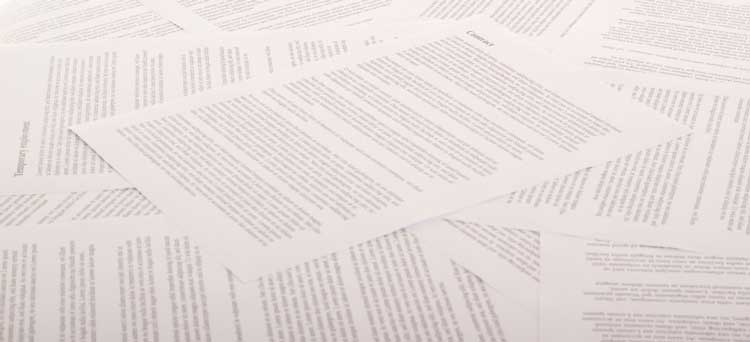Writing long-form content, whether it’s a blog post or white paper, can be an overwhelming and even confusing process if you don’t take steps to prepare before you start the writing process. To stay organized and better tell your story from beginning to end, put these long-form content creation tips and tricks to use:
Create an Outline
The most important aspect of any piece of long-form content is creating an outline. Your outline will help to keep you on track from the start and give you some direction when you’re feeling lost or overwhelmed as the actual writing process plays out. Your outline should act as a road map that walks you through each section of your piece and ensures that nothing important is overlooked when all is said and done.
You’ll want to include topics to cover and research to be done, as well as a guideline to the types of visuals, reports, resources, and statistics that need to be included in your content. When putting together your outline think of it as a checklist of everything that needs to be done, but break the outline up into sections as your content will be written so you can have an effective workflow to follow that allows you to focus on just one chunk of content at a time.
Brainstorm Bullet Points
Once your outline is created, brainstorm a set of bullet points for each section of your content that highlight the most important pieces of information you want your readers to learn. You can then work from these bulleted lists first to ensure all the essentials are there, and then fill out the rest of the content around your compiled information to help fill in the missing pieces.
Once you’ve built upon your bulleted lists, you may find that some of the other parts of your outline aren’t any longer needed, which saves you time and eliminates fluff. On the other hand you might find that your content needs more in depth information than initially planned, which only makes the reading richer and more valuable to readers.
Plan Your Format
While you’re creating your content, think about how you want to present it to your readers. If your content includes a lot of statistics or historical information, you may want to lead each section with a stunning photo or short educational video that makes your audience want to read the content to the end. If you’re creating a press release, you know that the information should be presented in a succinct and straight forward manner, but you can still plan a unique format that helps the content stand out from the crowd.
For example, you can create an article in the form of a FAQ sheet with questions used as headings and answers used to answer those questions. This is an engaging way to get the word out about a new product, a company’s grand opening, or a big event that provides all the information readers need to know in order to get involved.
Ditch the Redundancies
After you’ve created your outline and your bulleted ideas, go back through everything and weed out any ideas that overlap each other by combining them in some way. This will allow you to minimize the inclusion of redundancies and ensure that every piece of content you do include is relevant to the overall topic at hand.
You’ll want to repeat the process of weeding out irrelevant ideas and those that seem too repetitive after you’ve written the core of your content. After the “meat” of the piece has been completed, you will more than likely once again find that some of the ideas left to flesh out in your outline simply aren’t needed any longer. This will give you some extra space for visuals or to get more specific about the ideas that you’ve already written about.
In addition to using these tips and tricks, it’s important to get to know your intended audience and put yourself in their shoes during your initial brainstorming session. Read competitor blogs and check out consumer or company forums to gain some insight into what your potential readers expect to learn when reading your content – this works for all kinds of content whether a blog piece, a white paper, or an email newsletter series.






